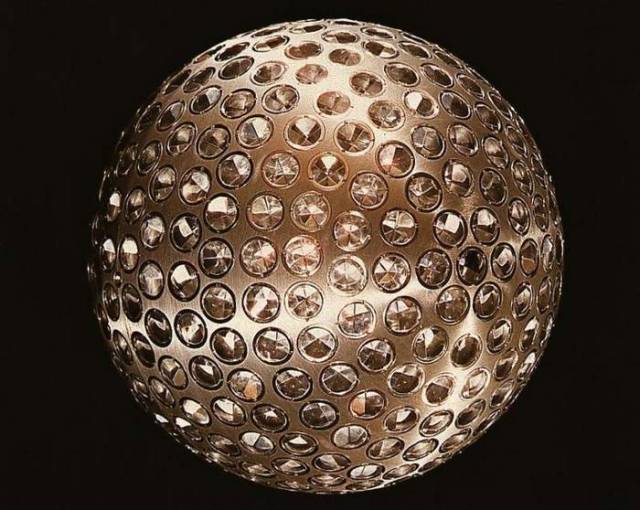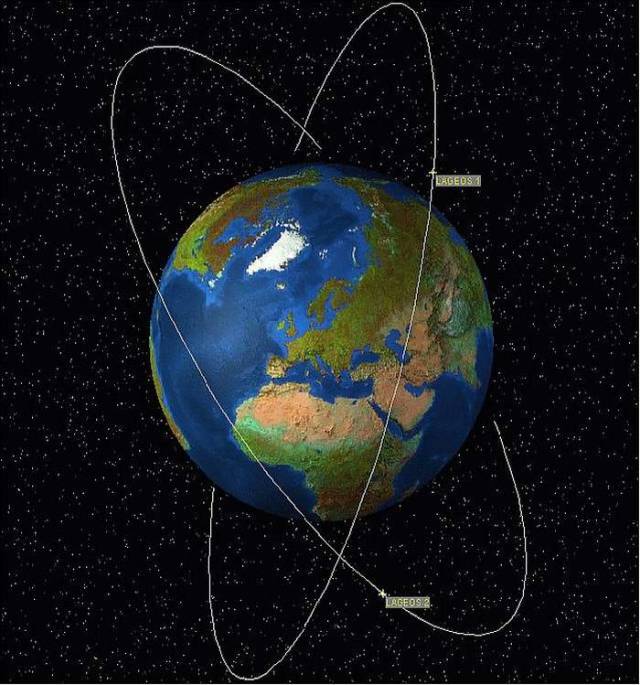Spherical LAGEOS-I is a passive research satellite of NASA, helping us measure the shape of Earth. Image credit NASA
LAGEOS was designed to act as a permanent reference point so that the Earth’s progress could be tracked relative to the satellite (in contrast to the traditional system of tracking satellites relative to the Earth).
The launch of LAGEOS-I took place on May 4, 1976 on a Delta-2 launch vehicle from VAFB (Vandenberg Air Force Base), CA.
One of LAGEOS’ functions is to aid in the understanding of the Earth’s crustal motions. The USGS (United States Geological Survey) as well as many institutions around the world are tracking the LAGEOS orbit to study the dynamics of the solid Earth, to analyze (deduce) continental drift (plate tectonics, crustal deformations), the Earth’s gravitational field, and the “wobble” in the Earth’s axis of rotation.
Illustration of the Lageos-1 and Lageos-2 orbits (image credit: ASI)
The LAGEOS spacecraft is an aluminum sphere with a brass core, built for NASA/GSFC by Bendix Aerospace Systems. The satellite has a diameter of 60 cm and a mass of 411 kg – a very massive satellite (cannonball) for its small size, with a minimal cross-section. The materials were chosen to reduce the effects of the Earth’s magnetic field on the satellite’s orbit. Its 426 prisms, called `corner-cube reflectors,’ are imbedded in the satellites’ surface. Of these, 422 are made of fused silica glass while the remaining 4 are made of germanium. As a passive satellite, there are no onboard sensors or electronics, there is no attitude control – and of course no communication with the spacecraft.
source eoportal







Leave A Comment